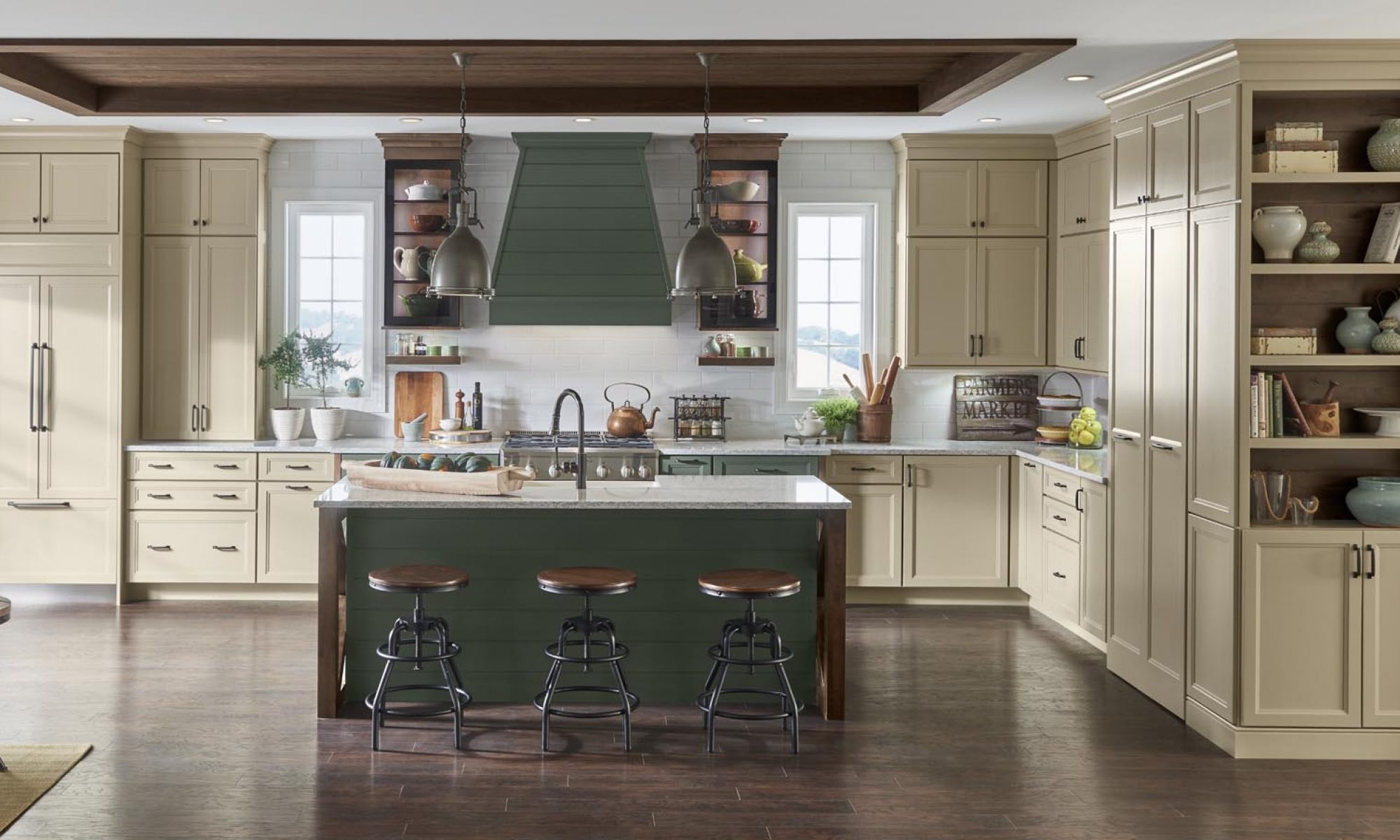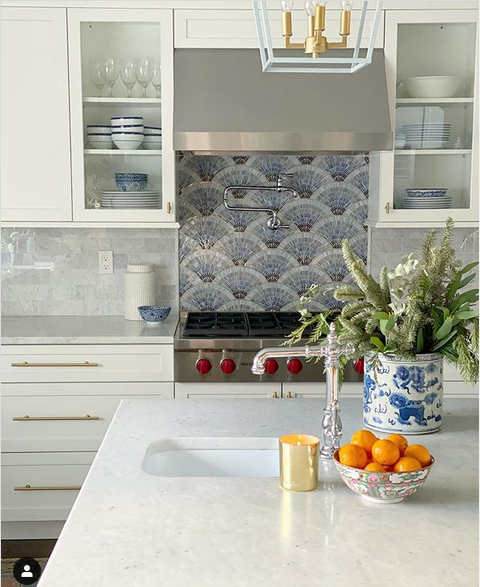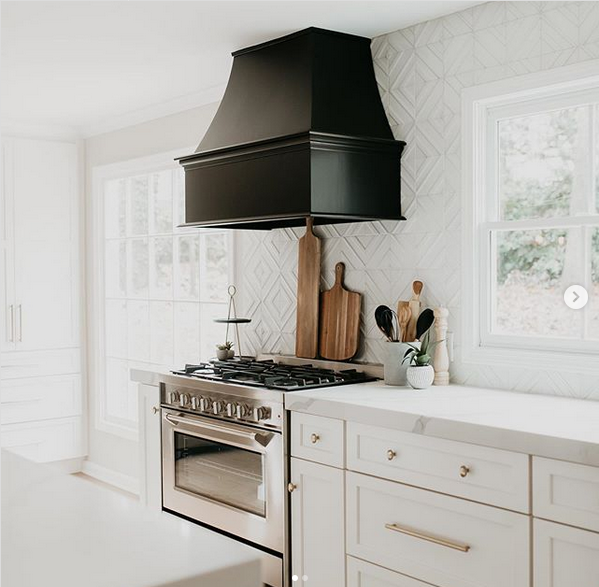 Here’s our complete guide to help you with the kitchen renovating process, including inspiration, costs, and everything in between.
Here’s our complete guide to help you with the kitchen renovating process, including inspiration, costs, and everything in between.

When it comes to investing in your home, there’s no room as important as the kitchen. Some estimates suggest that people spend upwards of an hour each day in their kitchen — which is 8% of their waking hours — making it one of the most utilized spaces in your home.
Aside from being just a place you cook and then clean up, the kitchen tends to be the epicenter of your house. It is where people gather, where holidays are celebrated, where memories are made, and often functions as your home’s primary source of warmth and utility.
It makes sense that you’d want your kitchen space to be to your liking, but as you can probably guess, a kitchen remodel can be difficult to navigate on your own. That’s why we’re outlining everything you need to know to completely renovate your kitchen.
You might also want to take into consideration that kitchen redesigns often lead to changing some other part of your home. This is because the styling of the kitchen often sets the tone for the rest of your house, and once you improve your kitchen, you’ll notice that everything else needs attention as well. You’ll want to keep that in mind before you begin: will your kitchen upgrades make the room better fit into the rest of your house or make everything else feel dated, drab, and in need of redesign as well?
When you’re clear on exactly what you want to accomplish, you’ll need to break the remodel down by cost, time, and labor.
Related: 10 Steps to Budgeting for Your Kitchen Remodel
Cost Of Kitchen Remodeling And Average Budgets
Of course, the main thing on almost anyone’s mind when it comes to a remodel is the cost. Kitchens are notoriously expensive, given that they require heavy materials and multiple high-ticket items to function well.
However, your kitchen remodel doesn’t have to bankrupt you. Though the average cost of a kitchen renovation is around $23,000.00 — ranging between $12,000 and $34,000 — it’s possible to accomplish what you want for as little as $4,000 or less, depending on how much manual labor you are capable of contributing, how many appliances you need to replace, how much of the fundamental structure of the room needs to change, and, of course, the materials you choose.
You should always plan for the unexpected, especially if you live in an older home. For example, you might run into issues with mold or plumbing, or perhaps even with the structural integrity of your home. In general, you should set aside 10 to 15 percent of the total cost of your renovation to cover contingencies.
What Do You Have To Pay For?
Plumbing
A kitchen requires functional plumbing. This means making sure your water lines are properly connected to your sink, and other appliances, such as your dishwasher or your refrigerator for water and ice, are correctly installed or can be extended.
Cabinets
Cabinets can range in price, depending on what material you want and how much space you have to cover. Generally, stock cabinets will run you about $60 to $200 per linear square foot, while semi-custom will cost between $100 to $650 per square foot, and completely custom cabinets could cost between $500 and $1,200 per linear square foot.
However, there are other ways to manage this cost, too. You can paint your existing cabinets to give them a fresh, new look. You can also opt for the modern trend of open shelving in one area, and simply take the cabinets out or remove the doors to save even more but achieve the same look.
Sinks
One of the most popular features in a kitchen is often the sink. The shape and design of it can really contribute to the overall look, and replacing your sink with a fresh, new product can instantly add modernity and a refreshed look to the space. Sinks can run in the range of a few hundred dollars, typically. Size and plumbing location matter when choosing a new sink. If your countertops are cut for a certain size and shape, you’ll need the same dimensions if you aren’t going to update your countertops, too. If you want the sink in a different area, that’s going to be a much larger project, as it will require moving the plumbing and water lines, too.
Faucets
Of course, no sink is complete without a faucet. Though they aren’t too expensive — ranging between a few hundred dollars, depending on the quality — it’s an opportunity to tie in a statement metal (perhaps gold, or copper) or at least give a nice and updated look to the kitchen as a whole. An older sink and faucet can really age a kitchen. Though they might seem like small details, they are actually crucial.
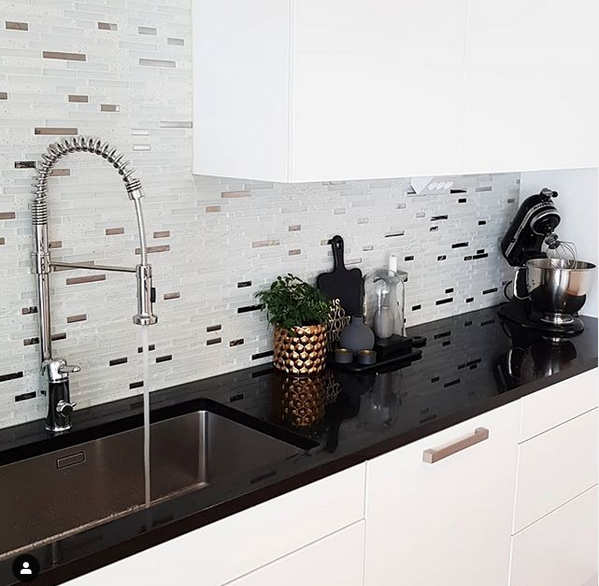
Hardware
Speaking of small but crucial details, hardware falls under that category as well. Hardware refers to handles, knobs and any other features on your cabinetry that make it functional. Kitchens look most cohesive when the hardware matches or at least coordinates with the other metals in the room, such as the faucet, or even the style of the appliances. Though some of the smallest details you’ll choose, changing the paint color and hardware on a cabinet can transform its appearance, so don’t underestimate how crucial they can be.
Misc. Storage And Pantry
Of course, kitchens aren’t just there to look good, they’re there for a specific function: eating! The most efficient kitchens include storage specifically for food, that may or may not be outfitted for spices. Investing in smart storage like a pantry to keep your chip bags and boxes of cereal neat is never a bad idea.
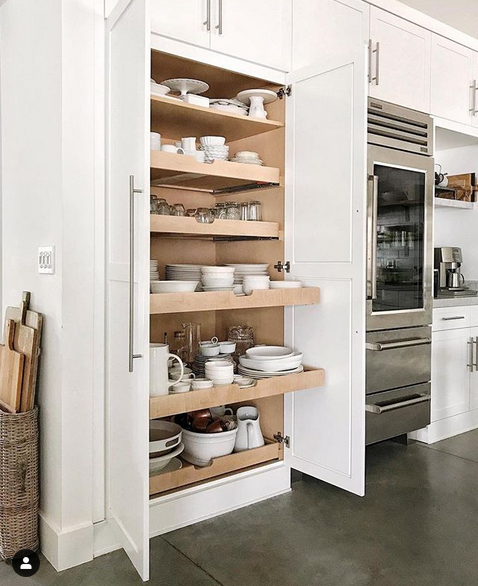
Appliances
Next to your kitchen sink, your refrigerator gets the most use in your busiest room of the house. New models with a plethora of features – perhaps even considering one with a touch screen or smart door – are widely available. But, like everything other decisions you’ll make for your kitchen remodel, the cost is a factor; refrigerators can run as low as a few hundred dollars to as high as a few thousand.
Whether you’re an avid home cook or you prefer takeout, your kitchen will still need a new oven, stovetop, or range. Many manufacturers found at both big box stores and higher-end showrooms offer suites of products, making shopping for matching pieces that much easier and at a wide range of price points.
Finally, a functional dishwasher is essential to a new kitchen. If yours isn’t working properly, you should budget a few hundred dollars at least for a dishwasher that is part of the same suite as your refrigerator and range to keep your look cohesive.
Flooring
Of course, flooring is also going to be a huge component of your kitchen remodel. There are various options you can use here, from linoleum to natural stone, or even cork. You should generally plan for around $1,500 to install ceramic or porcelain tile floors, nearly double that to install laminate floors and only about $300-$400 to install linoleum. Cork, while it is a sustainable option that provides a good amount of cushion for your joints, can run you up to $15 a square foot, or $1,500 for a 100-square foot kitchen.
You want to be sure your floor stands up for years to the daily use and abuse a kitchen floor typically absorbs, so sticking with tile or natural stone is your best bet.
Backsplash
While you’re looking at tile, don’t forget about your backsplash, the tile installed around the perimeter of your kitchen, just above the countertops and up to the bottom edge of your upper cabinets. This tile is placed there to ensure that food splatter and hot oil splashed while you’re prepping and cooking doesn’t damage your drywall. Your backsplash is also a great way to inject an extra shot of style into your kitchen by extending your granite or quartz countertop onto the walls, for example.

Walls And Ceilings
Speaking of, if you need to replace a wall or ceiling, you’ll need to factor in the cost of drywall. This does not include what you will need if you want to completely take down a wall, this is only to replace the surface of one. The cost to install drywall is, typically, $1-$2 per square foot, and each panel of drywall can run you between $10-$60.
Lighting
Last, your lighting fixtures are going to be what makes or breaks your kitchen. Aside from the obvious need for general illumination, you can create a layered lighting scheme by incorporating pendants above work areas like an island or the kitchen sink and accent lighting to highlight great details like crown molding. Kitchen lighting is all about making sure the important areas are well-lit, and you maintain the ambiance you desire.
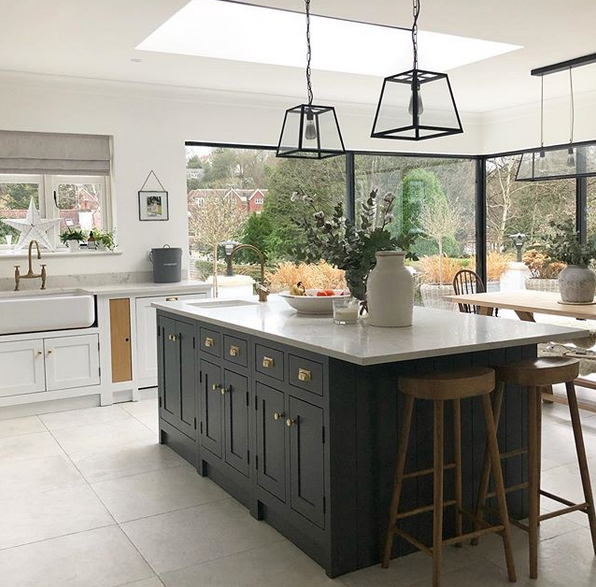
Kitchen Remodel Labor Rates
Of course, paying for your materials and appliances is only one part of the equation. Unless you are going to do the entire renovation yourself (which is generally not likely, given that there are multiple things in a kitchen that require professional installation) you need to calculate the cost of labor into your total budget.
Though this can vary widely based on the contractors hired, the amount of work and how much time it will take, some estimate that you should account for about $3,000 to $6,000 in installation fees, if you are doing a full kitchen remodel. You can more accurately calculate what that number might be for you by figuring out what 15 to 25 percent of your material cost would be. That is often around what you would have to pay a contractor.
When you’re looking for someone to hire, remember to always shop around and get multiple quotes before you commit to one service provider.
If you’re looking to just hire out someone to do one or two repairs at a time, you can use these estimates from HomeAdvisor.com to help you determine what it will cost to install the following items:
| Feature | Small remodel | Mid-range renovation | Major renovation |
| Appliance | $100-$200 per appliance | $200-$400 per appliance | $400-$500+ per appliance |
| Cabinets | $100-200 per cabinet | $200-$300 per cabinet | $300-$500 per cabinet |
| Countertops | $200-$500 | $400-$1,000 | $1,000-$2,500 |
| Faucets | $125-$200 per faucet | $200-$300 per faucet | $300-$550+ per faucet |
| Flooring | $600-$1,000 | $1,000-$1,500 | $1,500-$3,000 |
| Sink | $100-$250 | $250-$400 | $400-$600 |
| Backsplash | $150-$400 | $400-$800 | $800-$1,200 |
| Painting/adding wallpaper | $100-$200 | $200-$400 | $400-$600 |
Turnaround Time
Your contractor will provide a timeline for how long your kitchen renovation will take. Some estimate that the average turnaround time is about a month, or between 4 to 6 weeks. This can vary widely, depending on the service provider and the total scope of work. If you’re only having a few things updated, it will take significantly less time. Likewise, if you have a large kitchen that’s being completely gutted and refitted, you can expect a longer lead time.
While your kitchen is under construction, you may or may not have space to cook and eat your meals at home. If you live in an area where winter weather is a concern, try to plan your renovation for the summer or early fall when you can use the combination of your grill, toaster oven and microwave to cook meals. To be safe, though, you should add the cost of three to five take-out meals per week to your budget.
Kitchen Remodeling Ideas
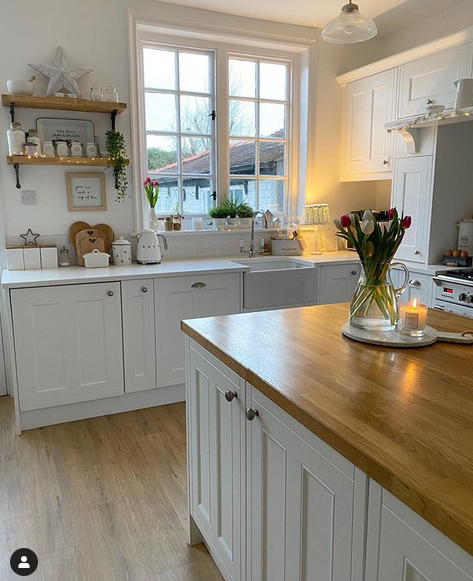
Start Small
Perhaps you know you need a total kitchen overhaul. If that’s the case, you can skip this section and go to the next, which is all about creating your mood board. If you aren’t quite ready to tackle a full-on remodel, think about a refresh instead.
For example, you can paint your kitchen cabinets and/or replace the hardware on them. You can upgrade your faucet, sink, and accessories. Another big fix is to update the lighting, which totally impacts the way a space is seen. Remember that you don’t necessarily need to change everything to get a pretty dramatic result. In many cases, simple remodeling ideas can work, too. In others, you can start small, and build from there.
Create A Mood Board
As with any renovation or repair, you should create a mood or inspiration board before you get started. This is important for a few reasons. First, if you’re working with a partner or a team, it’s crucial to have the same vision for your final outcome. Second, you’re working with a lot of moving parts and trying to integrate a lot of new pieces and fixtures into your space, and a mood board allows you to visualize whether or not your choices really go together. It’s easy to pick pieces you like and end up with clashing metals, colors or styles.
Once you have a cohesive, stylized layout for your space, work from there. Figure out what you’ll have to pay to install each new piece, and what you could possibly do on your own. You can also determine exactly where you could stand to splurge and where you could save when it comes to purchasing new appliances and items for the kitchen.
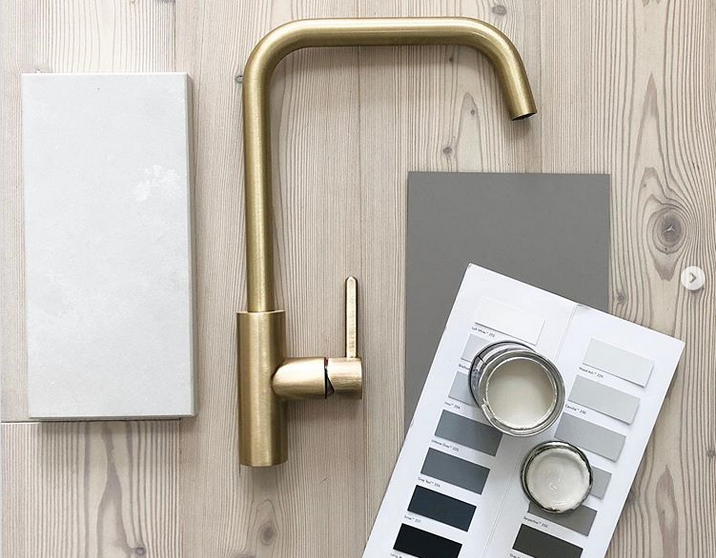
Never forget the importance of a kitchen in your home, and focus on two things: functionality as much as style, and flow with the rest of your rooms. While some options may be the most aesthetically appealing, you also have to keep in mind the function of everything as well. This could relate to everything from having a neat place to store your spices to having a board set up by the door where your kids can place their homework each day. Ultimately, it’s up to you to figure out how you use the space, and then, how you can best utilize it to make your life more streamlined and productive.
If you’re concerned that your Mid-Century kitchen is going to clash with the rest of your rustic, farmhouse-chic home, you can always blend two tastes by incorporating shapes or colors from one style into another room or redesigning your house to have a more uniform palette (think of something simple, like white walls and wood floors) so you can then decorate give each room a unique flair of its own.
No matter what, remember that this is your space, and it’s going to be one that you use often. It has to work for you and be somewhere you could imagine yourself cooking, cleaning, and enjoying life.
